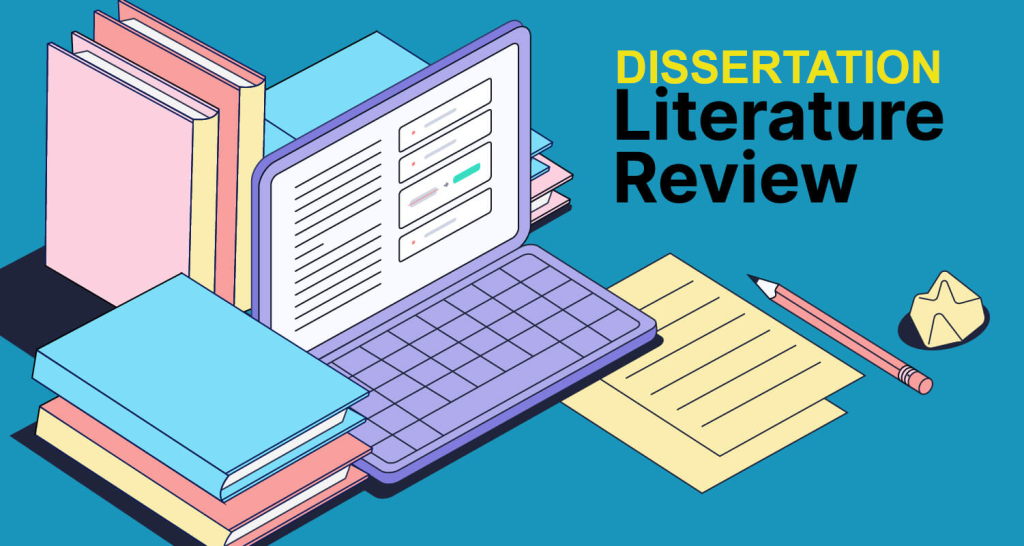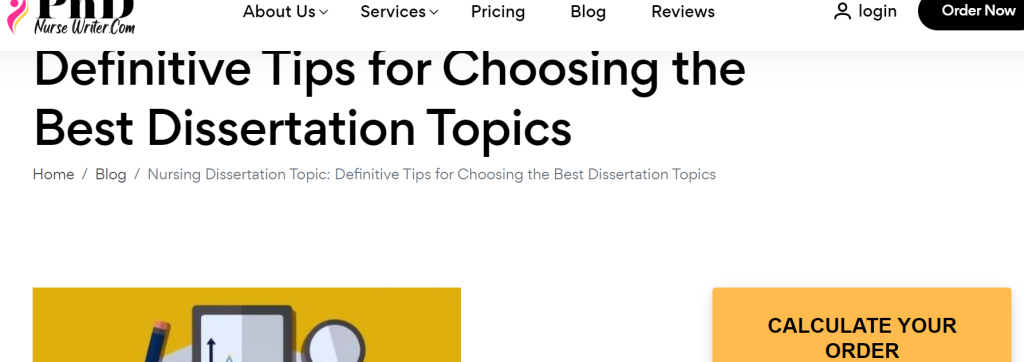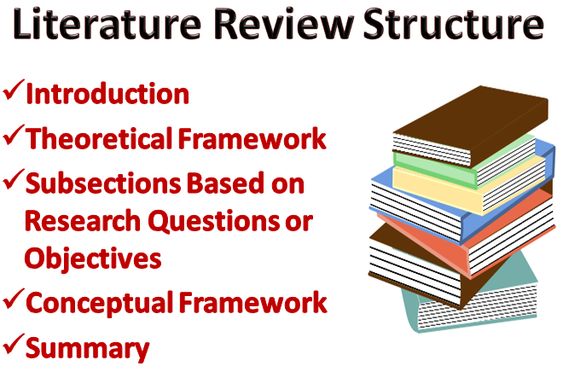
Table of Contents
The nursing dissertation literature review is the cornerstone of your research journey. It’s not just a summary of existing knowledge, but a critical analysis that shapes your research question, guides your methodology, and underpins your conclusions.
This guide provides a comprehensive overview of crafting an effective nursing dissertation literature review. It covers essential steps, critical considerations, and valuable tips. You will also find a sample nursing literature review to help you put things into perspective.
Steps to Crafting a Nursing Dissertation Literature Review
1.The Purpose of the Nursing Dissertation Literature Review
A nursing dissertation literature review is a crucial section of a nursing dissertation that systematically analyzes existing research and scholarly work relevant to the chosen research topic. It provides a comprehensive overview of the current state of knowledge, identifies gaps in the literature, and justifies the rationale for the research study.
The nursing dissertation literature review serves several important purposes:
- Establish the context of the research: It places the dissertation research within the broader field of nursing and identifies its relevance to existing knowledge.
- Identify key concepts and theories: It defines and explains the major concepts and theoretical frameworks that underpin the research topic.
- Summarize and synthesize previous findings: It critically evaluates and synthesizes the findings of relevant studies, identifying both strengths and weaknesses.
- Identify research gaps: It highlights areas where there is limited or contradictory evidence, informing the research question and objectives.
- Justify the need for the study: It demonstrates the contribution the dissertation research will make to the field of nursing and its potential to advance knowledge.
Developing a strong nursing dissertation literature review requires careful planning, thorough research, and critical analysis skills. It is essential to consult a wide range of sources, including peer-reviewed journal articles, books, and other relevant publications. The review should be well-organized, concise, and clearly written, using appropriate academic language and citations.
Your nursing dissertation literature review should not be just a mere summary of existing research. Instead, it should demonstrate a critical analysis that provides a framework for the dissertation research and shows the researcher’s understanding of the field.
2. Planning Your Dissertation Literature Review
A well-planned approach is crucial for writing a successful nursing dissertation literature review. Here’s a structured framework that you should follow when crafting the literature review of your nursing dissertation:
a) Defining Your Scope:
- Topic Selection: Choose a topic that aligns with your interests, fits within your program requirements, and is manageable within the timeframe of your dissertation. Trusted academic platforms such as PhD Nurse Writer offer well-articulated scholarly articles with a variety of topic ideas to inspire you in choosing your own.

- Keywords and Search Terms: Identify relevant keywords and search terms to guide your literature search. Consult databases, thesauri, and previous research on your topic to identify relevant terms.
- Time Frame: Determine the timeframe for your literature review, allowing sufficient time for research, analysis, and writing.
b) Choosing Databases and Resources:
- Academic Databases: Explore specialized nursing databases such as CINAHL (Cumulative Index to Nursing and Allied Health Literature), Nursing Papers, PubMed, and Medline, alongside general research databases like Scopus, Web of Science, and Google Scholar.
- Professional Organizations: Explore resources provided by professional organizations like the American Nurses Association (ANA), the National League for Nursing (NLN), and the International Council of Nurses (ICN).
- Grey Literature: Include grey literature, such as government reports, policy documents, and conference proceedings, to gain a comprehensive understanding of the topic.
c) Establishing Search Strategies:
- Boolean Operators: Utilize Boolean operators (AND, OR, NOT) to refine your search, ensuring you find relevant and specific information.
- Filters: Apply filters to narrow your search results by publication date, language, publication type, and other criteria.
- Citation Tracking: Track citations from relevant papers to uncover additional relevant studies.
- Snowballing: Utilize snowballing techniques by following the references cited in relevant articles to discover related literature.
3. Conducting the Nursing Dissertation Literature Review
With your plan in place, you can now begin the process of searching, reading, and analyzing literature:
a) Gathering and Reading Literature:
- Systematic Approach: Utilize a systematic approach to collect literature, ensuring you capture a comprehensive range of perspectives.
- Critical Evaluation: Apply critical thinking skills to assess the quality and validity of each source, considering factors like research methodology, sample size, and study design.
- Note-Taking: Take detailed notes while reading, highlighting key findings, arguments, and research gaps. Use a consistent note-taking system for organization and referencing.
b) Analyzing and Synthesizing the Literature:
- Categorization and Thematic Analysis: Group similar studies together, identifying themes, patterns, and trends within the literature.
- Identifying Gaps and Inconsistencies: Highlight discrepancies, inconsistencies, and knowledge gaps within the existing research.
- Drawing Connections and Comparisons: Analyze how different studies relate to each other, comparing their methodologies, findings, and conclusions.
4. Writing the Nursing Dissertation Literature Review
The final stage involves transforming your analysis into a well-structured and coherent narrative:
a) Structure and Organization:

- Introduction: Provide a concise overview of the chosen topic, outlining the purpose and scope of the literature review, and establishing its relevance to your research question.
- Body Paragraphs: Organize the review into logical sections, grouping related themes or concepts, and building a clear and compelling narrative.
- Conclusion: Summarize the key findings of the review, reiterate the research gaps, and clearly link the review to your research question and methodology.
b) Writing Style and Language:
- Clarity and Conciseness: Maintain a clear and concise writing style, using precise language and avoiding jargon or overly technical terms.
- Academic Voice: Adhere to the conventions of academic writing, using a neutral and objective tone, avoiding personal opinions or subjective statements.
- Proper Referencing and Citation: Use a consistent referencing style (e.g., APA, MLA) to ensure accurate attribution of sources and avoid plagiarism.
5. Critical Considerations for Nursing Dissertation Literature Review
Beyond the basic steps, several critical considerations can enhance the quality and impact of your nursing dissertation literature review:
- Relevance to Your Research: Ensure all included literature directly relates to your research question, contributing to a focused and relevant review.
- Quality of Sources: Choose reputable sources from peer-reviewed journals, scholarly books, and credible professional organizations.
- Critical Analysis: Go beyond simply summarizing sources; critically analyze their strengths, weaknesses, and limitations.
- Synthesis and Integration: Avoid presenting a mere list of studies; synthesize the literature, highlighting key findings and drawing connections between different sources.
- Objectivity and Neutrality: Maintain a neutral and objective tone, avoiding bias or subjective interpretations.
- Avoiding Plagiarism: Paraphrase and cite all sources accurately, using proper referencing techniques to avoid plagiarism.
6. Tips for Writing a Strong Nursing Dissertation Literature Review
Here are some practical tips to help you write a strong nursing dissertation literature review:
- Start early: Begin your literature review as soon as possible to allow sufficient time for research and writing.
- Break down the task: Divide the literature review into manageable sections, focusing on one theme or concept at a time.
- Use mind maps and concept maps: Visualize the relationships between concepts and ideas to improve understanding and organization.
- Seek feedback: Share your work with peers, supervisors, or faculty members for constructive feedback and suggestions.
- Review and revise: Thoroughly review and revise your literature review to ensure clarity, accuracy, and coherence.
7. Importance of a Strong Nursing Dissertation Literature Review
A well-crafted nursing dissertation literature review is crucial for several reasons:
- Demonstrating Knowledge: It showcases your understanding of the existing body of knowledge in your field, demonstrating your expertise and preparedness for further research.
- Guiding Your Research: It helps you refine your research question, select an appropriate methodology, and identify potential research gaps.
- Strengthening Your Argument: It provides evidence to support your claims, strengthens your conclusions, and enhances the overall credibility of your dissertation.
Examples of Compelling Nursing Dissertation Literature Review Topics
To inspire your own research, here are some potential topics for a nursing dissertation literature review:
- The impact of telehealth on patient outcomes in chronic disease management.
- Exploring the effectiveness of different pain management strategies in palliative care.
- Examining the role of cultural competency in nursing practice.
- Investigating the experiences of nurses caring for patients with mental health conditions.
- Evaluating the effectiveness of patient education programs on medication adherence.
Common Mistakes to Avoid in Your Nursing Dissertation Literature Review
Writing a nursing dissertation literature review is a crucial step in your research journey. It provides a foundation for your study, showcasing your understanding of the existing knowledge base and highlighting gaps that your dissertation will address. However, there are common pitfalls to avoid to ensure your nursing dissertation literature review is effective and impactful.
1. Lack of Focus and Clarity:
One of the most frequent mistakes is failing to have a clear focus for your nursing dissertation literature review. It’s essential to define your research question and ensure that every source you include directly relates to it. Avoid including irrelevant information or articles that are too broad, as this will confuse the reader and weaken the impact of your nursing dissertation literature review.
2. Ignoring Critical Appraisal:
While it’s crucial to include relevant sources, simply summarizing them isn’t enough. You must critically evaluate each study’s methodology, limitations, and findings to demonstrate your analytical skills. This critical appraisal is essential for building a strong foundation for your nursing dissertation literature review and showcasing your understanding of the research field.
3. Insufficient Synthesis and Analysis:
Don’t just list summaries of studies. You need to go beyond simple descriptions and synthesize the information, drawing connections between different sources and highlighting emerging themes and controversies. This analysis helps you identify gaps in the literature, which ultimately informs your research question and provides a strong foundation for your dissertation.
4. Ignoring Ethical Considerations:
Ethical considerations are vital in nursing research, and your nursing dissertation literature review should reflect this. Consider ethical implications of the research studies you’re discussing, highlighting potential biases, conflicts of interest, or ethical challenges encountered. This demonstrates your awareness of ethical issues and their impact on the validity of the research findings.
5. Neglecting Formatting and Style:
Your nursing dissertation literature review should be well-organized, using clear headings and subheadings to guide the reader. Pay attention to the formatting guidelines provided by your university and maintain a consistent style throughout. Use proper citations and references to ensure the credibility of your work.

Avoiding these common mistakes will ensure your nursing dissertation literature review is a strong and impactful foundation for your research, showcasing your understanding of the existing knowledge base and setting the stage for your original contribution to the field of nursing.
Sample Nursing Dissertation Literature Review
The Impact of Mindfulness-Based Interventions on Chronic Pain Management: A Literature Review
Introduction:
Chronic pain is a prevalent and debilitating condition that significantly impacts patients’ physical, mental, and social well-being. Despite advancements in medical treatments, traditional pain management strategies often fail to address the multifaceted nature of chronic pain, highlighting the need for complementary approaches. Mindfulness-based interventions (MBIs) have emerged as a promising alternative, demonstrating potential to improve pain perception, reduce distress, and enhance coping mechanisms. This literature review examines the current state of research on the impact of MBIs on chronic pain management, exploring their effectiveness, mechanisms of action, and potential benefits.
Literature Search and Selection:
A comprehensive search of relevant databases (PubMed, CINAHL, PsycINFO) was conducted using keywords including “mindfulness”, “meditation”, “chronic pain”, “pain management”, and “intervention”. Studies published in English between 2010 and 2023 were included, focusing on randomized controlled trials (RCTs) and quasi-experimental studies evaluating the effects of MBIs on adults experiencing chronic pain. Studies solely focusing on acute pain or specific pain conditions (e.g., cancer pain) were excluded.
Overview of Findings:
The reviewed literature consistently demonstrates the effectiveness of MBIs in improving various aspects of chronic pain management.
- Pain Intensity and Distress: MBIs have been shown to significantly reduce pain intensity and related distress. Studies report reductions in pain severity, frequency, and negative emotional responses to pain, suggesting a positive impact on pain perception and emotional regulation.
- Functional Capacity and Quality of Life: MBIs have also been linked to improved functional capacity and overall quality of life. Participants reported increased physical activity levels, reduced disability, and improved mood and well-being.
- Pain-Related Cognitions and Behaviors: Several studies suggest that MBIs alter pain-related cognitions and behaviors, promoting acceptance, reducing catastrophising, and enhancing coping skills. This change in perspective may contribute to improved pain management and reduced distress.
Mechanisms of Action:
While the exact mechanisms underlying the effectiveness of MBIs remain under investigation, proposed mechanisms include:
- Altered Brain Activity: Neuroimaging studies demonstrate that MBIs can induce changes in brain regions associated with pain processing, attention, and emotion regulation, potentially contributing to reduced pain perception and emotional response.
- Increased Pain Tolerance: MBIs may enhance pain tolerance by facilitating the development of non-reactive attitudes towards pain, reducing anxiety and fear associated with painful sensations.
- Improved Stress Regulation: Mindfulness practices are known to improve stress management abilities, which may indirectly reduce pain by mitigating the physiological and psychological effects of stress on pain perception and processing.
Limitations and Future Directions:
While the evidence supporting the benefits of MBIs for chronic pain is promising, further research is needed to address several limitations:
- Heterogeneity of Interventions: There is substantial variability in the type, duration, and intensity of MBIs used in research, making it challenging to draw definitive conclusions about the optimal approach.
- Methodological Considerations: Some studies lack adequate control groups, use small sample sizes, or rely on self-reported outcomes, necessitating caution when interpreting results.
- Long-Term Effects: While short-term studies demonstrate positive effects, more research is needed to assess the long-term efficacy and sustainability of MBIs for chronic pain management.
Conclusion:
The growing body of evidence suggests that MBIs hold significant potential as a complementary approach to chronic pain management. By targeting both physical and psychological aspects of pain, MBIs can reduce pain intensity, enhance coping skills, and improve overall quality of life. Further research is needed to refine existing interventions, optimize their delivery, and elucidate their long-term effectiveness. As a promising and readily accessible approach, MBIs represent a valuable tool for promoting patient-centered and holistic pain management strategies.
Note: This is a sample literature review. You need to adapt it to your specific research question, include specific studies from your literature search, and expand on the findings and limitations based on your analysis. Make sure to follow the formatting and citation style required by your institution.

A strong nursing dissertation literature review is not only a requirement but also a valuable asset to your research. By following the guidelines outlined in this guide, you can craft a comprehensive, well-structured, and insightful review that sets the stage for a successful and impactful dissertation. Remember, your nursing dissertation literature review is your opportunity to showcase your knowledge, critical thinking skills, and dedication to advancing the nursing profession.
Get Professional Nursing Dissertation Writing Help
Are you having difficulties in writing a stellar nursing dissertation literature review? Then, engage Nursing Papers for professional nursing dissertation writing help. We can assist you in crafting an authentic literature review for a more compelling dissertation. Our writers can help you with writing all the sections of your nursing dissertations, essays, research papers and case studies.







